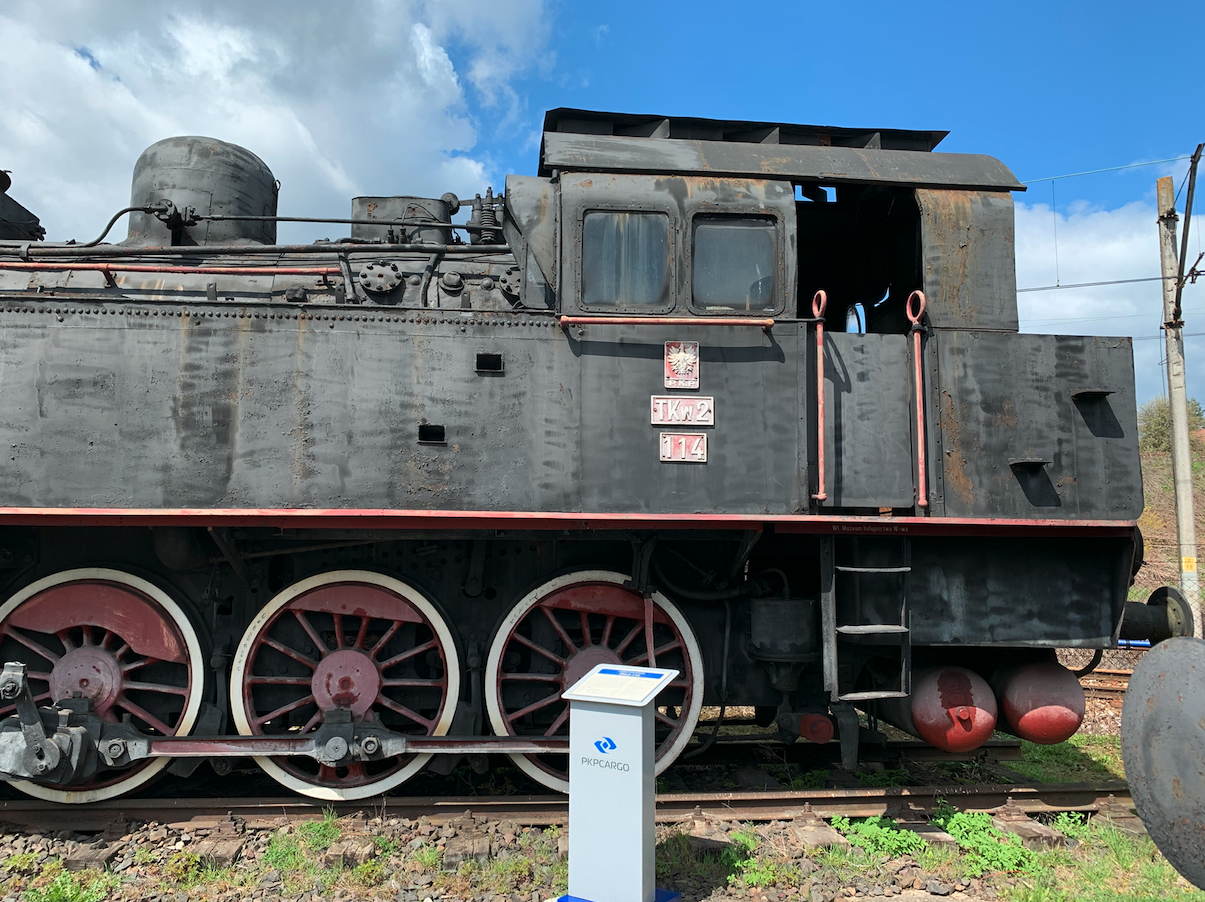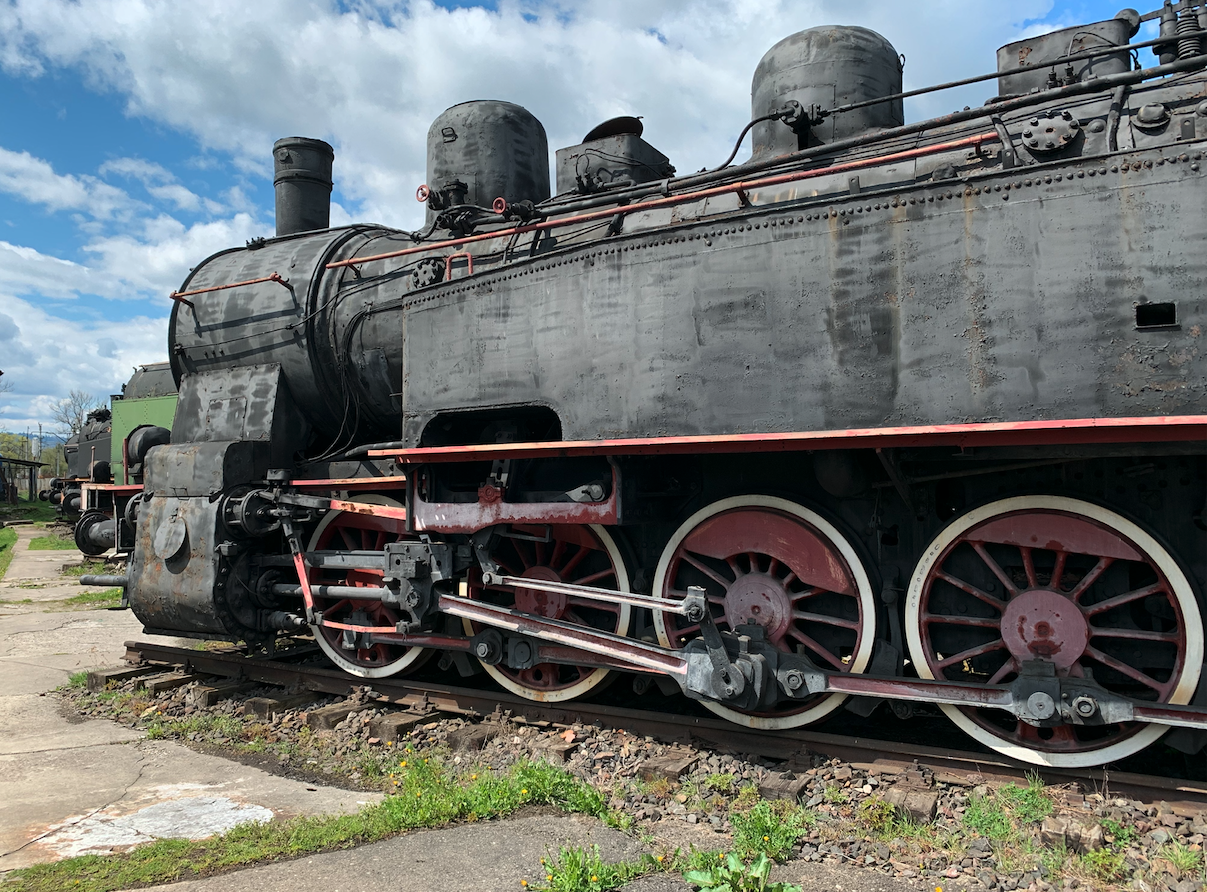Chabówka 2022-01-13
Steam locomotive TKw2-114.
The steam locomotive, which in Poland received the designation TKw1 and TKw2, was a Prussian locomotive developed several years before the Great World War, as the T16 type. 1,236 T16 series locomotives were built, therefore the locomotive was very popular in Prussia. The locomotive is a tenderer and has an E axis system, otherwise 0-5-0 or OOOOO, and in Poland a small letter "w".


Before we discuss the T16 series steam locomotive (TKW1, TKw2), we will provide some information about their manufacturer. At the beginning of the 19th century, the L. Schwartzkopff mechanical factory was established in Berlin, which in 1870 was transformed into the company Berliner Maschinenbau AG (BMAG, or Berliner Maschinenbau-Actien-Gesellschaft). The company was involved in the production of steam locomotives and weapons, especially torpedoes. Torpedoes were used in both the Great World War and the Second World War. The BMAG company was developing very well until the Germans started to standardize the German society. The company executives were of the Mosaic faith, and the German governments said there was "strong Jewish influence" in the company. The company's bosses were deprived of their property and forcibly displaced from Germany. This is how the Germans treated those who built their power.
The T16 steam locomotive was constructed by the engineer Robert Garbe (1847-1932). Robert Hermann Garbe was a German railway engineer and chief engineer of the Berlin branch of the Prussian State Railways from 1895 to 1917. He was particularly famous for his steam locomotive designs and is described as one of the greatest authorities in the field of steam locomotives.
The T16 steam locomotive was presented at the world exhibition in Malmö. The main advantage of the steam locomotive was its high efficiency (it had a superheater), simplicity of construction and ease of repair. After the Great World War, Poland received 37 copies, designated TKw1. After the Second World War, 129 locomotives were entered into the inventory of Polish railways, designated TKw2. In Poland, the locomotives worked on local lines and as shunting locomotives at marshalling yards. TKw1 and TKw2 locomotives were in the following depots: Tarnowskie Góry, Łazy, Gliwice, Bytom, Ruda Chebdzie, Szopienice, Katowice. The last TKw2-57 steam locomotive was removed from the state of the Polish State Railways in December 1976. Several locomotives worked longer on the company's sidings.
TKw2-114 steam locomotive.
The locomotive was built in 1916 and received the serial number 5789. The designation on German lines is No. 94 729. The steam locomotive as TKw2-114 was used in the following locomotives: Zbąszynek (from 1945), Inowrocław (from 1947), Szopienice (from 1948) , Łazy (from 1953), Chebdzie (from 1954), Łazy (from 1955), Bytom (from 1958), Gliwice (from 1959). In 1971, the TKw2-114 steam locomotive was sold to the KWK Zabrze mine. In 1993, he found his way to the Chabówka open-air museum.
T-T data of TKw2 steam locomotives:
The production was carried out in the period 1913 - 1925. The service weight was 84,900 kg. Driving wheels diameter 1.35 m. Boiler pressure 12 at. The heating area of the boiler is 120 m2. Superheater area 45.3 m2. Grate area of 2.30 m2. Design speed 50 km / h.
Written by Karol Placha Hetman
